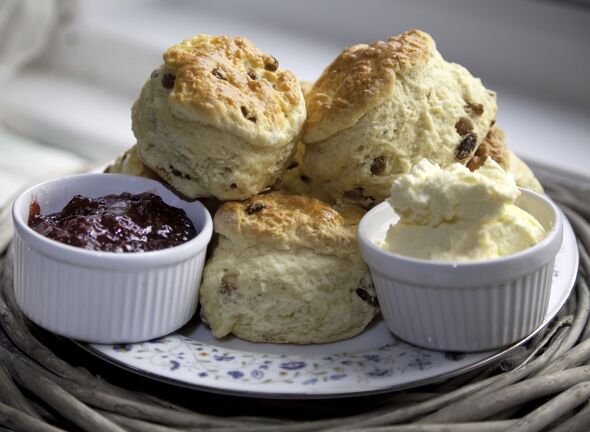Lifestyle
Master the Art of Baking: Two Steps for Perfect Scones

Baking the perfect scone involves more than just mixing ingredients; two essential steps can significantly enhance their texture and height. By implementing these techniques, home bakers can achieve light, fluffy scones that rival those from high-end cafés without the steep price tag.
The first crucial step is to ensure that the butter used in the scone mixture is frozen. This approach prevents the butter from melting before the baking process begins. According to experts from Sally’s Baking, grating frozen butter into the flour allows it to release steam as it melts in the oven, creating the desired air pockets that contribute to a light, airy texture. These air pockets also enhance the scones’ flavour, making them more enjoyable.
Sally’s Baking emphasizes the importance of keeping the dough cold. “Keeping scone dough as cold as possible prevents over-spreading,” the source explains. “When scones over-spread in the oven, they lose the flaky, moist, and deliciously crumbly texture.” To avoid this, it is recommended to use cold heavy cream, eggs, and, most importantly, frozen grated butter. The expert notes that, similar to making pie crusts, incorporating the cold butter into the dry ingredients creates crumbs. As these crumbs melt during baking, they release steam, leading to a flaky centre and crisp edges.
The second key step for achieving a tall, even rise is to avoid twisting the cutter when shaping the scones. Twisting the cutter can seal the edges of the dough, hindering its ability to rise. A clean, straight cut allows the dough to expand freely, resulting in larger, taller scones. The Home Bake Academy advises, “When cutting out your scones with a round cutter, dip the cutter in flour each time before pressing it into the dough.” This technique prevents the dough from sticking and ensures cleaner edges.
When cutting the scones, it is essential to press the cutter straight down and lift it straight up without twisting. Twisting seals the edges, preventing even rising. “For tall, even scones, it’s all about that clean cut,” the Home Bake Academy states.
By following these two straightforward yet effective steps—using frozen butter and avoiding twisting the cutter—bakers can ensure their scones turn out perfectly every time. With minimal ingredients and a simple process, making scones at home becomes an accessible and rewarding endeavour. As the festive season approaches, this quick guide can help anyone create delicious scones that are sure to impress friends and family alike.
-

 Entertainment2 months ago
Entertainment2 months agoIconic 90s TV Show House Hits Market for £1.1 Million
-

 Lifestyle4 months ago
Lifestyle4 months agoMilk Bank Urges Mothers to Donate for Premature Babies’ Health
-

 Sports3 months ago
Sports3 months agoAlessia Russo Signs Long-Term Deal with Arsenal Ahead of WSL Season
-

 Lifestyle4 months ago
Lifestyle4 months agoShoppers Flock to Discounted Neck Pillow on Amazon for Travel Comfort
-

 Politics4 months ago
Politics4 months agoMuseums Body Critiques EHRC Proposals on Gender Facilities
-

 Business4 months ago
Business4 months agoTrump Visits Europe: Business, Politics, or Leisure?
-

 Lifestyle4 months ago
Lifestyle4 months agoJapanese Teen Sorato Shimizu Breaks U18 100m Record in 10 Seconds
-

 Politics4 months ago
Politics4 months agoCouple Shares Inspiring Love Story Defying Height Stereotypes
-

 World4 months ago
World4 months agoAnglian Water Raises Concerns Over Proposed AI Data Centre
-

 Sports4 months ago
Sports4 months agoBournemouth Dominates Everton with 3-0 Victory in Premier League Summer Series
-

 World4 months ago
World4 months agoWreckage of Missing Russian Passenger Plane Discovered in Flames
-

 Lifestyle4 months ago
Lifestyle4 months agoShoppers Rave About Roman’s £42 Midi Dress, Calling It ‘Elegant’









